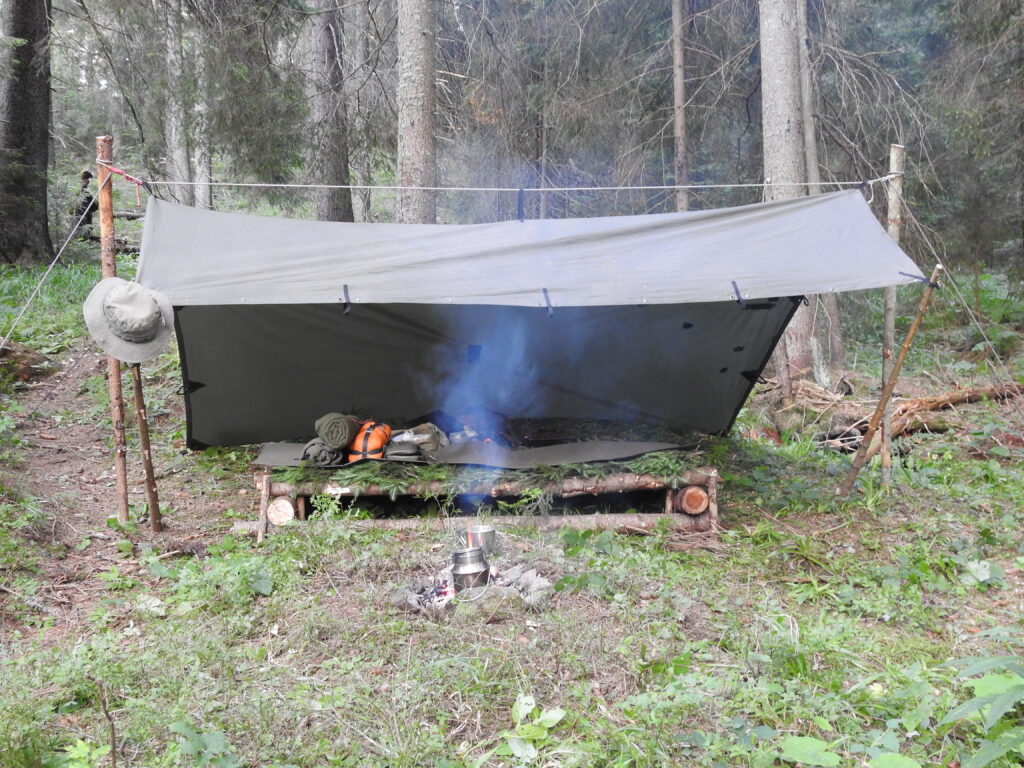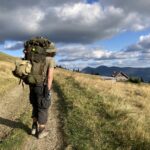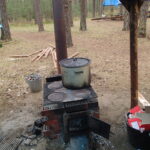I was in Romania, slowly making my way up the mountains, overloaded with tens of kilograms of equipment and food. I was in Scotland, walking through the highlands with mostly traditional gear, getting wet and cold whenever it rained. The time has come for another long hiking journey. This time it will be a bit colder and a bit longer. I’ll try to gather a 100% traditional, plastic-free gear and use it during my trip. In order not to crumble under the weight of my rucksack, I have to choose only the most important things to take with me. That includes cookware — I can’t bring all the pans, pots and mugs I’d like to have, cause they’d weigh a ton.
What criteria does my cookware go through to be considered “traditional”?
Well, the equipment I’ll choose has to be plastic-free and the technology used can’t be something that would be unfamiliar to people 100 or 200 years ago. That means no gas stoves or synthetic sporks, also no modern ultralight pots. I will apply these criteria to the whole of my equipment, not only the cookware.
What purpose does the chosen cookware have to serve?
First of all, I need some vessel to heat my food in. Preferably, if I can afford carrying the weight, I’ll take two separate vessels – one for boiling water and drinking tea, one for eating and heating food. This will prevent porridge rests or bacon fat getting into my beverages.
Next important thing is to have something to eat with. I can take steel cutlery, but it will only be an extra burden to carry. The chosen utensils should allow for comfortable and easy food consumption, without a need to use your bare hands when eating (they will be really dirty most of the time).
There may be times, when lighting a campfire isn’t an option or is extremely difficult. It’s nice to have a backup heat source. It should be something easy to light, producing enough heat to boil a mug of water easily.
My choices
- My trusty stainless steel mug
It’s quite big, able to contain about 0,7L of liquid. Although it’s a mug, I mostly eat out of it when hiking. It’s comfortable to hold because of the handle. Also, because it’s more tall than wide, the food inside stays warm for longer. I can also always use it to boil some liquid inside, cause it’s made from metal. - 2L stainless steel bottle
I bought it once from a Chinese e-market. I tried to find a non-Chinese stainless steel bottle supplier, but surprisingly I couldn’t find any. I can transport water in it, and if needed I can boil the water inside to make some food or tea. It also has a small, removable sieve included, so I can throw some pine needles or wild herbs into the water and drink the infusion without random stuff getting between my teeth. - Wooden spoon
I carved it myself some time ago. It’s not the best design, but it’s mine and that’s what matters the most. It’s quite small and very light. Of course, it’s less durable than steel cutlery, but if the spoon breaks — well, it happens — I can just carve another one in the camp or glue it together using a mixture of melted pine sap and crushed coals. I’ll use this spoon paired with my bushcraft knife to eat my meals. - Alcohol stove
As I recently learned from F.E. Galton’s book, alcohol stoves were already in use during the 19th century. I’ll take a simple Mil-Tec brand stove and some methylated alcohol in a can or glass bottle as my fuel. It will weigh a bit, but it will ensure I have warm food even in the worst rainstorm.

As for now, this is my preferred set of cooking equipment to take on a journey. If the topic of traditional gear is something you’d like to learn more about, let me know about it in the comments — maybe I’ll write another article, featuring the whole set I’ll use during the travel.


